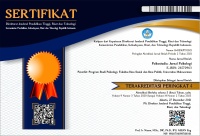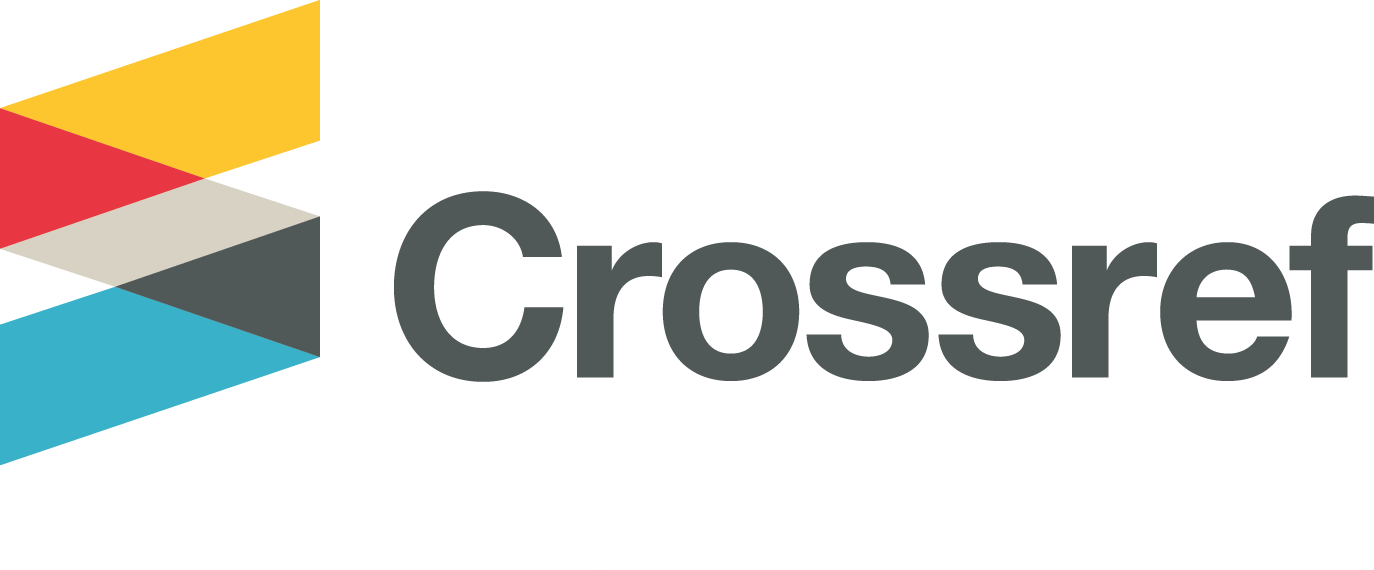Profit Protection Strategy And Consumer Perception Of Fairness: Testing The Dual Entitlement Principle in Indonesia
Abstract
In economic psychology, the principle of Dual Entitlement asserts that buyers are entitled to reference price and sellers are entitled to reference profit. Sellers are not permitted to increase their price solely to increase their profit because such action would be deemed unfair by buyers. But what if the cost of production or operation rises, putting the reference profit at risk? Buyers will perceive it as fair when the sellers’ decision to increase their price is aimed at protecting their reference profit. Previous studies on consumer perception of fairness and profit protection have focused on price increases as sellers’ strategy to protect their reference profit. What about an alternative strategy of reducing the amount of refunds given to buyers? Does price framing, consolidated versus disaggregated, affect consumer’s fairness perception? The current experimental utilized a 2 (profit protect strategy: price increase vs. refund reduction) X 2 (price information: consolidated vs. disaggregated price) between-subject design involving 207 participants (age range 18-23 years; Median age = 19; 81% female) to examine consumer perception of fairness towards the airline’s profit protection strategy. The result showed that both increasing prices and reducing refunds were considered equally fair by participants even after controlling their perception of Indonesian sellers’ pricing practices. However, when taking price information into consideration, the disaggregated price increase was considered more fair compared to the consolidated one. Interestingly, the case wasn’t the same with refund reduction as participants perceived disaggregated price disclosure less fair than consolidated one. Implications and suggestions for further research are discussed..
Dalam psikologi ekonomi, prinsip Dual Entitlement menyatakan bahwa pembeli berhak atas harga patokan dan penjual berhak atas laba patokan. Penjual tidak diperkenankan untuk menaikkan harga semata-mata untuk menambah keuntungan karena tindakan tersebut akan dipersepsikan pembeli sebagai perilaku tidak adil. Lalu bagaimana jika ongkos produksi atau operasional penjual membengkak dan laba patokan terancam? Pembeli dapat memahami tindakan penjual menaikkan harga hanya jika hal tersebut bertujuan untuk melindungi laba patokan. Studi terdahulu mengenai persepsi keadilan pembeli terhadap strategi melindungi laba berfokus pada menaikkan harga sebagai strategi utama penjual. Bagaimana dengan alternatif strategi mengurangi jumlah refund yang dikembalikan pada pembeli? Selain itu, apakah cara penjual menyajikan informasi harga secara total ataupun rinci berpengaruh pada persepsi keadilan? Eksperimen ini menggunakan desain 2 (strategi melindung laba: menaikkan harga vs. penurunan refund) X 2 (penyajian informasi harga: total vs. harga rinci) dan melibatkan 207 partisipan (rentang usia 18-23 tahun; Median usia = 19; 81% perempuan) untuk menguji persepsi keadilan pembeli terhadap strategi melindungi laba yang dilakukan oleh maskapai penerbangan. Hasilnya, baik menaikkan harga maupun pengurangan refund dengan cara penyampaian informasi harga total maupun rinci dipersepsikan sama adilnya oleh partisipan, bahkan setelah mempertimbangkan persepsi terhadap pricing practice penjual di Indonesia yang tidak adil. Namun, ketika mempertimbangkan bagaimana informasi harga disajikan, menaikkan harga dengan informasi rinci dipersepsikan lebih adil dibandingkan secara total. Menariknya, pengurangan refund secara rinci justru dipersepsikan tidak lebih adil dibandingkan secara total. Implikasi dan saran studi lanjutan dibahas dalam penelitian ini.
Keywords
Full Text:
FULL TEXTReferences
Ahmetoglu, G., Furnham, A., & Fagan, P. (2014). Pricing practices: A critical review of their effects on consumer perceptions and behaviour. Journal of Retailing and Consumer Services, 21(5), 696–707. https://doi.org/10.1016/j.jretconser.2014.04.013
Akman, P., & Garrod, L. (2011). WHEN ARE EXCESSIVE PRICES UNFAIR? Journal of Competition Law and Economics, 7(2), 403–426. https://doi.org/10.1093/joclec/nhq024
Amawate, V., & Deb, M. (2021). Antecedents and consequences of consumer skepticism toward cause-related marketing: Gender as moderator and attitude as mediator. Journal of Marketing Communications, 27(1), 31–52. https://doi.org/10.1080/13527266.2019.1630663
Bolton, L. E., & Alba, J. W. (2006a). Price Fairness: Good and Service Differences and the Role of Vendor Costs. Journal of Consumer Research, 33(2), 258–265. https://doi.org/10.1086/506306
Bolton, L. E., & Alba, J. W. (2006b). Price Fairness: Good and Service Differences and the Role of Vendor Costs. Journal of Consumer Research, 33(2), 258–265. https://doi.org/10.1086/506306
Bolton, L. E., Warlop, L., & Alba, J. W. (2003). Consumer Perceptions of Price (Un)Fairness. Journal of Consumer Research, 29(4), 474–491. https://doi.org/10.1086/346244
Campbell, M. C. (1999a). Perceptions of Price Unfairness: Antecedents and Consequences. Journal of Marketing Research, 36(2), 187. https://doi.org/10.2307/3152092
Campbell, M. C. (1999b). Perceptions of Price Unfairness: Antecedents and Consequences. Journal of Marketing Research, 36(2), 187. https://doi.org/10.2307/3152092
Carter, R. E., & Curry, D. J. (2010). Transparent pricing: theory, tests, and implications for marketing practice. Journal of the Academy of Marketing Science, 38(6), 759–774. https://doi.org/10.1007/s11747-010-0189-2
Chandra, B.O.C (2021). Pengaruh Kenaikan Harga versus Pengurangan Refund terhadap Persepsi Keadilan Konsumen: Menguji Teori Dual Entitlement di Indonesia (Skripsi tidak dipublikasikan).
Chen, B., & Chen, J. (2017). Compete in Price or Service?—A Study of Personalized Pricing and Money Back Guarantees. Journal of Retailing, 93(2), 154–171. https://doi.org/10.1016/j.jretai.2016.12.005
Chu, W., Lee, J., Baumann, C., & Kang, C. (2020). Fairness perception of ancillary fees: Industry differences and communication strategies. Journal of Retailing and Consumer Services, 55, 102092. https://doi.org/10.1016/j.jretconser.2020.102092
Collie, T. (Tess), Bradley, G., & Sparks, B. A. (2002). Fair process revisited: Differential effects of interactional and procedural justice in the presence of social comparison information. Journal of Experimental Social Psychology, 38(6), 545–555. https://doi.org/10.1016/S0022-1031(02)00501-2
Dada, O., Olaleye, S., Sanusi, I., & Obaido, G. (2021). Covid-19 and airline refunds: An analysis of flight passengers’ reviews in North America. Proceedings of the 19th International Conference on E-Society 2021. https://doi.org/10.33965/es2021_202101l025
Dickson, P. R., & Kalapurakal, R. (1994). The use and perceived fairness of price-setting rules in the bulk electricity market. Journal of Economic Psychology, 15(3), 427–448. https://doi.org/10.1016/0167-4870(94)90023-X
Direktorat jenderal Perhubungan Udara. Kelud Force Majeure, Maskapai Bebas Dari Kewajiban Ganti Rugi Kementerian Perhubungan Republik Indonesia. (2014, February 14). https://dephub.go.id/post/read/Kelud-Force-Majeure-Maskapai-Bebas-Dari-Kewajiban-Ganti-Rugi-60391
Djudiyah, D. (2022). The Role of Emotion Regulation on Compulsive Shopping of Clothing. Psikostudia Jurnal Psikologi , 11(1). https://doi.org/10.30872/psikostudia
Doney, P. M., & Cannon, J. P. (1997a). An Examination of the Nature of Trust in Buyer–Seller Relationships. Journal of Marketing, 61(2), 35–51. https://doi.org/10.1177/002224299706100203
Doney, P. M., & Cannon, J. P. (1997b). An Examination of the Nature of Trust in Buyer–Seller Relationships. Journal of Marketing, 61(2), 35–51. https://doi.org/10.1177/002224299706100203
Einwiller, S. (2003). When Reputation Engenders Trust: An Empirical Investigation in Business-to-ConsumerElectronic Commerce. Electronic Markets, 13(3), 196–209. https://doi.org/10.1080/1019678032000092246
Evangelidis, I. (2024). Frontiers: Shrinkflation Aversion: When and Why Product Size Decreases Are Seen as More Unfair than Equivalent Price Increases. Marketing Science, 43(2), 280–288. https://doi.org/10.1287/mksc.2023.0269
Faul, F., Erdfelder, E., Lang, A.-G., & Buchner, A. (2007). G*Power 3: A flexible statistical power analysis program for the social, behavioral, and biomedical sciences. Behavior Research Methods, 39(2), 175–191. https://doi.org/10.3758/BF03193146
Ferguson, J. L., Ellen, P. S., & Piscopo, G. H. (2011). Suspicion and Perceptions of Price Fairness in Times of Crisis. Journal of Business Ethics, 98(2), 331–349. https://doi.org/10.1007/s10551-010-0552-8
Field, A., Miles, J., & Field, Z. (2012). Discovering statistics using R. Sage Publications.
Fox J, Weisberg S (2019). An R Companion to Applied Regression, Third edition. Sage, Thousand Oaks CA. https://socialsciences.mcmaster.ca/jfox/Books/Companion/.
Frey, B. S., & Pommerehne, W. W. (1993). On the fairness of pricing — An empirical survey among the general population. Journal of Economic Behavior & Organization, 20(3), 295–307. https://doi.org/10.1016/0167-2681(93)90027-M
Friedman, E. M. S., & Toubia, O. (2022). Pricing Fairness in a Pandemic: Navigating Unintended Changes to Value or Cost. Journal of the Association for Consumer Research, 7(1), 89–97. https://doi.org/10.1086/711850
Gourville, J. T., & Soman, D. (1998). Payment Depreciation: the Behavioral Effects of Temporally Separating Payments From Consumption. Journal of Consumer Research, 25(2), 160–174. https://doi.org/10.1086/209533
Henderson, P. W., & Peterson, R. A. (1992). Mental accounting and categorization. Organizational Behavior and Human Decision Processes, 51(1), 92–117. https://doi.org/10.1016/0749-5978(92)90006-S
Henrich, J., Heine, S. J., & Norenzayan, A. (2010). The weirdest people in the world? Behavioral and Brain Sciences, 33(2–3), 61–83. https://doi.org/10.1017/S0140525X0999152X
Jeong, H., Ye, H., Bhatt, S., Zhang, J., & Suri, R. (2021). When should retailers increase prices during a crisis? A longitudinal inquiry during the COVID ‐19 pandemic. Journal of Consumer Behaviour, 20(5), 1269–1276. https://doi.org/10.1002/cb.1934
Joinson, A., Reips, U.-D., Buchanan, T., & Schofield, C. B. P. (2010). Privacy, Trust, and Self-Disclosure Online. Human-Computer Interaction, 25(1), 1–24. https://doi.org/10.1080/07370020903586662
Kahneman, D., Knetsch, J. L., & Thaler, R. H. (1986a). Fairness and the Assumptions of Economics. The Journal of Business, 59(S4), S285. https://doi.org/10.1086/296367
Kahneman, D., Knetsch, J. L., & Thaler, R. H. (1986b). Fairness and the Assumptions of Economics. The Journal of Business, 59(S4), S285. https://doi.org/10.1086/296367
Khammar, A., Yarahmadi, M., & Madadizadeh, F. (2020). What Is Analysis of Covariance (ANCOVA) and How to Correctly Report Its Results in Medical Research? Iranian Journal of Public Health, 49(5), 1016–1017.
Kim, J., Lee, H., & Lee, J. (2020). Smartphone preferences and brand loyalty: A discrete choice model reflecting the reference point and peer effect. Journal of Retailing and Consumer Services, 52, 101907. https://doi.org/10.1016/j.jretconser.2019.101907
L. Ferguson, J., & Scholder Ellen, P. (2013). Transparency in pricing and its effect on perceived price fairness. Journal of Product & Brand Management, 22(5/6), 404–412. https://doi.org/10.1108/JPBM-06-2013-0323
Lee, C., & Morewedge, C. K. (2023). Mental accounting of product returns. Journal of Consumer Psychology, 33(3), 583–590. https://doi.org/10.1002/jcpy.1354
Matute, J., Polo-Redondo, Y., & Utrillas, A. (2016). The influence of EWOM characteristics on online repurchase intention. Online Information Review, 40(7), 1090–1110. https://doi.org/10.1108/OIR-11-2015-0373
McKnight, D. H., & Chervany, N. L. (2006). Reflections on an Initial Trust-Building Model. In Handbook of Trust Research. Edward Elgar Publishing. https://doi.org/10.4337/9781847202819.00008
Mohan, B., Buell, R. W., & John, L. K. (2020). Lifting the Veil: The Benefits of Cost Transparency. Marketing Science, 39(6), 1105–1121. https://doi.org/10.1287/mksc.2019.1200
Morwitz, V. G., Greenleaf, E. A., & Johnson, E. J. (1998). Divide and Prosper: Consumers’ Reactions to Partitioned Prices. Journal of Marketing Research, 35(4), 453–463. https://doi.org/10.1177/002224379803500404
Natalia, D., Elgeka, H., & Tjahjoanggoro, A. (2021c). Consumer-Brand Identification and Brand Loyalty: Analysis on Customer Satisfaction and Brand Trust as Mediators. Psikostudia Jurnal Psikologi , 10(3). https://doi.org/10.30872/psikostudia
Pan, Y., & Zinkhan, G. M. (2006). Exploring the impact of online privacy disclosures on consumer trust. Journal of Retailing, 82(4), 331–338. https://doi.org/10.1016/j.jretai.2006.08.006
Prastika, N. D. (2013). Emosional Branding Telepon Seluler Merek Nokia Terhadap Konsumen. Psikostudia Jurnal Psikologi , 2(1). http://dx.doi.org/10.30872/psikostudia.v2i1.2226
R Core Team (2022) R: A Language and Environment for Statistical Computing. R Foundation for Statistical Computing, Vienna.
https://www.R-project.org
Robert H. Frank. (2024). Microeconomics and Behavior: (B. Gordon & D. Reiner, Eds.; 11th ed.). McGraw Hill.
Peraturan Menteri Perhubungan Republik Indonesia Nomor PM 185 Tahun 2015, 36 (2015).
Pratama, A. M. (2020, April 23). Maskapai dilarang angkut penumpang, refund tiket bakal diberi voucher. Kompas.Com. Retrieved June 14, 2024, from https://money.kompas.com/read/2020/04/23/200100326/maskapai-dilarang-angkut-penumpang-refund-tiket-bakal-diberi-voucher?page=all
Pratiwi, F. (2020, June 15). Maskapai dipersilakan jual tiket sentuh tba. Republika. Retrieved June 14, 2024, from https://ekonomi.republika.co.id/berita/qbz17w457/maskapai-dipersilakan-jual-tiket-sentuh-tba?
Sharma, D., & Pandey, S. (2020). The role payment depreciation in short temporal separations: Should online retailer make customers wait? Journal of Retailing and Consumer Services, 53, 101965. https://doi.org/10.1016/j.jretconser.2019.101965
Sutianto, F. D. (2020, April 21). Maskapai bayar refund tiket dengan voucher, ylki: tidak fair . KumparanBISNIS. Retrieved June 14, 2024, from https://kumparan.com/kumparanbisnis/ylki-soal-refund-tiket-pesawat-berbentuk-voucher-tidak-fair-1tGbxsvm96m/full
Tarrahi, F., Eisend, M., & Dost, F. (2016). A meta-analysis of price change fairness perceptions. International Journal of Research in Marketing, 33(1), 199–203. https://doi.org/10.1016/j.ijresmar.2015.10.004
Totzek, D., & Jurgensen, G. (2021). Many a little makes a mickle: Why do consumers negatively react to sequential price disclosure? Psychology & Marketing, 38(1), 113–128. https://doi.org/10.1002/mar.21426
Undang Undang Nomor 8 Tahun 1999 Tentang Perlindungan Konsumen,
(1999).
Urbany, J. E., Madden, T. J., & Dickson, P. R. (1989). All’s not fair in pricing: An initial look at the dual entitlement principle. Marketing Letters, 1(1), 17–25. https://doi.org/10.1007/BF00436145
Vaidyanathan, R., & Aggarwal, P. (2003). Who is the fairest of them all? An attributional approach to price fairness perceptions. Journal of Business Research, 56(6), 453–463. https://doi.org/10.1016/S0148-2963(01)00231-4
White, S. M., Sussman, A. B., Beckett, D., & Hong, S. (2023). When Shrouding Prices Signals Transparency: A Preference for Costly Disclosures. SSRN Electronic Journal. https://doi.org/10.2139/ssrn.4479218
Xia, L., & Monroe, K. B. (2004). Price partitioning on the Internet. Journal of Interactive Marketing, 18(4), 63–73. https://doi.org/10.1002/dir.20017
Xia, L., Monroe, K. B., & Cox, J. L. (2004). The Price is Unfair! A Conceptual Framework of Price Fairness Perceptions. Journal of Marketing, 68(4), 1–15. https://doi.org/10.1509/jmkg.68.4.1.42733
DOI: http://dx.doi.org/10.30872/psikostudia.v13i3.15912
Refbacks
- There are currently no refbacks.
Copyright (c) 2024 Laurentia Amadea & Harry Susianto

This work is licensed under a Creative Commons Attribution-ShareAlike 4.0 International License.
Psikostudia: Jurnal Psikologi is indexed by :
PSIKOSTUDIA: Jurnal Psikologi Published by Faculty of Social and Political Siences, University of Mulawarman, Samarinda, East Kalimantan and This work is licensed under a Creative Commons Attribution-ShareAlike 4.0 International License.
_________________________________________
PSIKOSTUDIA: Jurnal Psikologi
Department of Psychology
Faculty of Social and Political Siences, University of Mulawarman
Jl. Muara Muntai Kampus Gn. Kelua Samarinda 75411
Phone: +62 813 35350368
E-Mail: psikostudia@fisip.unmul.ac.id




















